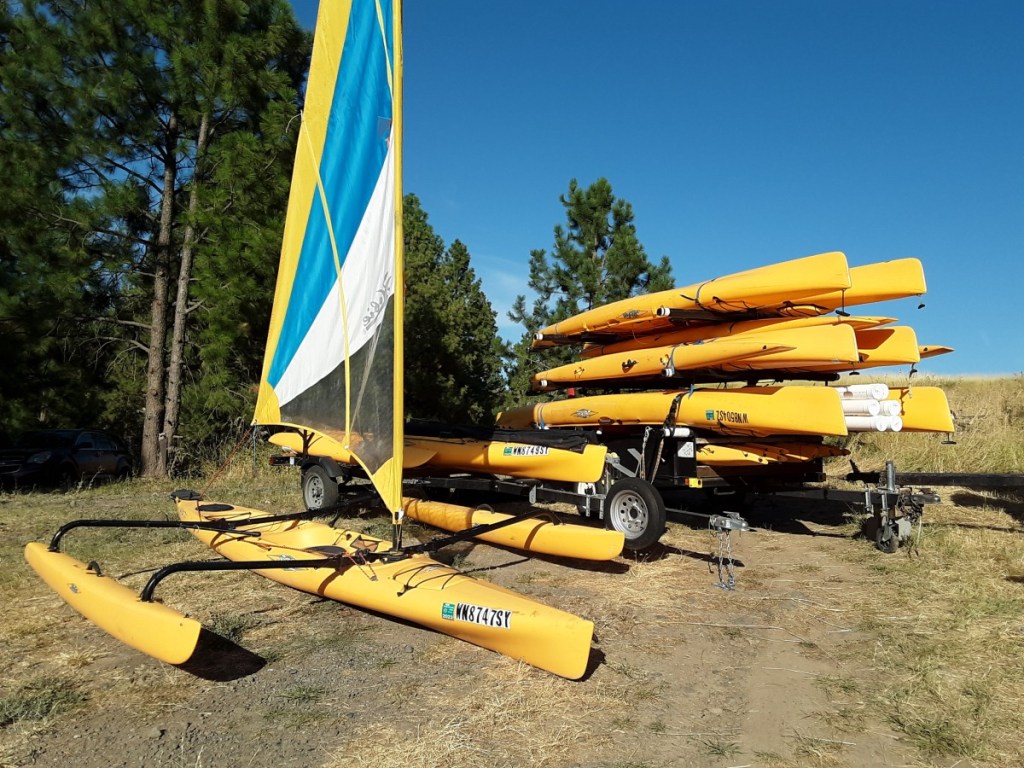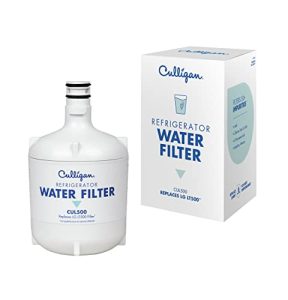Contents
- Overview of Hobie Kayak
- Benefits of Kayaking
- Choosing the Right Hobie Kayak
- Essential Gear for a Hobie Kayak Adventure
- Planning for a Hobie Kayak Adventure
- Preparing for a Hobie Kayak Adventure
- Navigating the Waters with Hobie Kayak
- Exploring Unique Destinations with a Hobie Kayak
- Fishing with a Hobie Kayak
- Joining the Hobie Kayak Community
Imagine gliding through crystal clear waters, with the sun warming your skin and the gentle breeze kissing your face. With the Hobie Kayak Adventure, you can embark on a thrilling expedition, exploring the endless possibilities that await you on the water. Whether you’re a seasoned adventurer or a first-time kayaker, this exhilarating experience will have you sailing through the waves with ease and discovering hidden gems along the way. Get ready to dive into a world of excitement and embark on an unforgettable journey with the Hobie Kayak Adventure.
Overview of Hobie Kayak
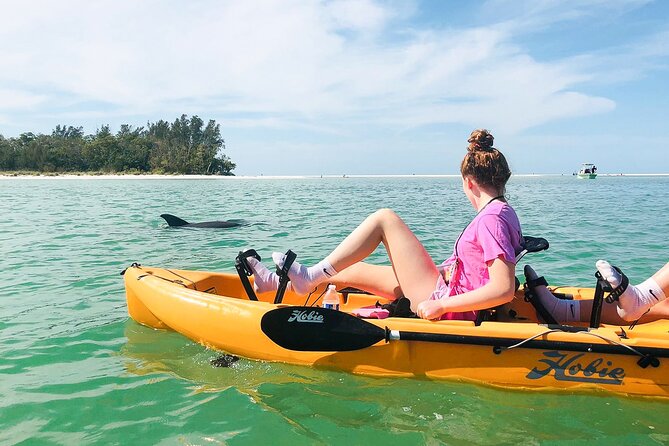
1.1 History of Hobie Kayak
Hobie Kayak, a division of Hobie Cat Company, has a rich history spanning over six decades. The company was founded by Hobie Alter, a passionate waterman and pioneer in the world of water sports. In the early 1950s, Alter revolutionized the surfing culture by creating the first foam-and-fiberglass surfboards, making surfing more accessible to the masses.
Inspired by his love for the ocean and water exploration, Alter ventured into the world of kayaking. In 1997, Hobie Kayak was established with a commitment to producing high-quality, innovative kayaks that would enhance the paddling experience. Over the years, Hobie Kayak has become synonymous with superior craftsmanship, cutting-edge technology, and unmatched performance.
1.2 Features and Design
Hobie Kayaks are renowned for their exceptional design and innovative features that set them apart from other kayaks in the market. One of the key features that have made Hobie Kayak a favorite amongst paddlers is its MirageDrive system. This revolutionary propulsion system allows you to pedal your kayak using your legs, providing a more efficient and hands-free paddling experience. This unique technology enables you to cover greater distances with less effort, making it ideal for long expeditions or leisurely exploration.
Additionally, Hobie Kayaks come equipped with a variety of features that enhance both comfort and functionality. The comfortable seating systems ensure that you can spend hours on the water without experiencing discomfort. The adjustable seat backs and lumbar support provide optimum comfort, allowing you to focus on your paddling and enjoy the beauty of your surroundings.
The hull designs of Hobie Kayaks are another standout feature. They are crafted using durable and lightweight materials, offering excellent stability and maneuverability. Whether you are navigating through calm lakes, coastal waters, or even rougher conditions, Hobie Kayaks provide a stable and reliable platform that instills confidence in paddlers of all skill levels.
1.3 Popular Models
Hobie Kayak offers a diverse range of models to suit the needs and preferences of different paddlers. Here are three popular models that showcase the versatility and quality of Hobie Kayaks:
-
Hobie Mirage Pro Angler 14: This model is a dream come true for avid anglers. It is equipped with all the features necessary for a successful fishing expedition, including integrated rod holders, a large storage capacity, and a MirageDrive system that allows for hands-free, precise maneuvering.
-
Hobie Mirage Passport 10.5: Designed with recreational kayakers in mind, the Mirage Passport 10.5 offers an excellent balance of performance and affordability. It features a stable and responsive hull, a comfortable seating system, and ample storage space, making it an ideal choice for beginners and intermediate paddlers.
-
Hobie Mirage Outback: The Outback model is a true all-rounder, suitable for various water conditions and activities. It combines stability, speed, and versatility, making it perfect for fishing, touring, and even surfing. With its spacious deck and numerous attachment points, the Outback provides ample room for gear customization.
Benefits of Kayaking
2.1 Physical Fitness
One of the greatest benefits of kayaking is the positive impact it has on your physical well-being. Engaging in regular paddling sessions can lead to significant improvements in cardiovascular fitness, muscle strength, and overall endurance. The repetitive motion of paddling works various muscle groups, including the arms, shoulders, back, and core. As you navigate through the water, your muscles are engaged, providing an effective full-body workout.
Kayaking is a low-impact activity, which means it places minimal stress on your joints compared to high-impact sports like running or weightlifting. This makes it an ideal exercise option for individuals with joint problems or those looking for a low-risk activity.
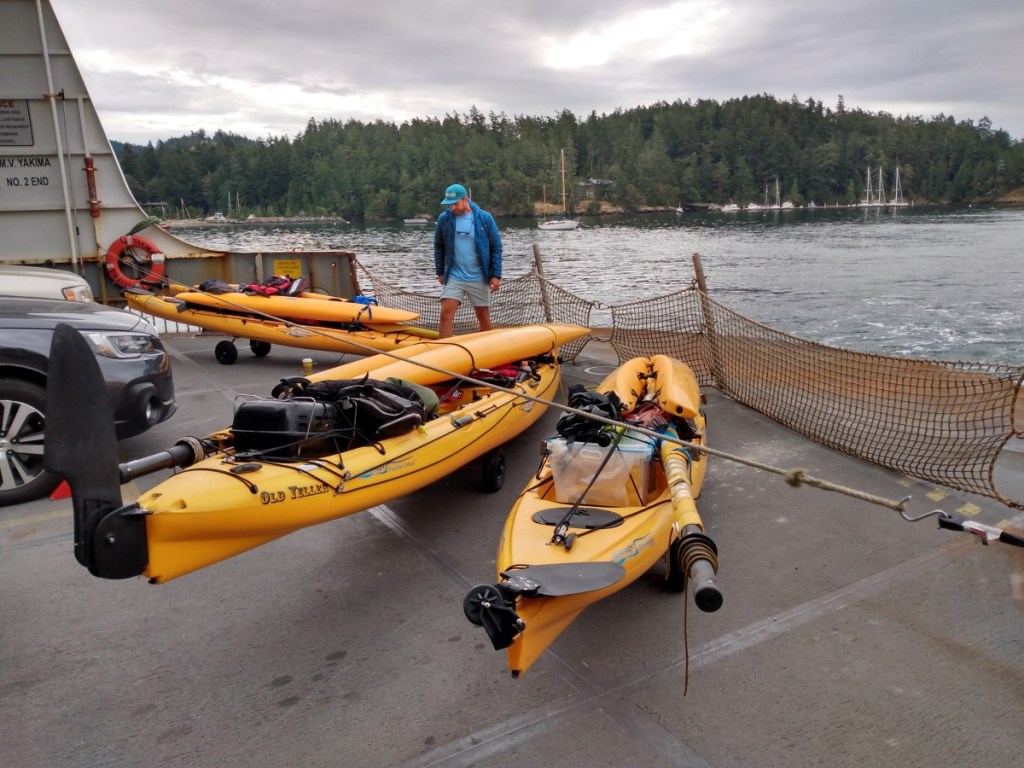
2.2 Mental Health
In addition to its physical benefits, kayaking also offers a plethora of mental health advantages. Spending time on the water in a kayak provides an opportunity to escape from the hustle and bustle of daily life and immerse yourself in a peaceful environment. The tranquility of the water, the soothing sound of waves, and the beauty of nature can help reduce stress, alleviate anxiety, and promote a sense of calm and relaxation.
Kayaking can also be a meditative experience, allowing you to be present in the moment and cultivate mindfulness. Being fully engaged in the rhythmic motion of paddling, observing the surroundings, and connecting with nature can provide a much-needed break from the pressures of everyday life.
2.3 Connection with Nature
One of the greatest joys of kayaking is the direct connection it offers with the natural world. Whether you are exploring serene lakes, meandering rivers, or breathtaking coastlines, kayaking allows you to fully immerse yourself in the beauty of nature. You become intimately acquainted with the sights, sounds, and wildlife around you, creating a deep appreciation for the environment.
As you paddle through pristine waters, you may encounter a variety of marine life, such as dolphins, turtles, or even whales, depending on your chosen location. Kayaking gives you a unique perspective, bringing you closer to these creatures and their habitats. It serves as a reminder of the importance of preserving our natural ecosystems and fosters a sense of responsibility to protect and conserve these precious resources for future generations.
Choosing the Right Hobie Kayak
3.1 Purpose and Environment
When selecting a Hobie Kayak, it is important to consider your intended purpose and the type of environment you will predominantly be paddling in. Are you primarily interested in fishing? Do you prefer leisurely excursions on calm lakes? Or are you looking for an adrenaline-pumping adventure in the open ocean?
For fishing enthusiasts, models such as the Hobie Mirage Pro Angler 14 or the Mirage Outback, with their specialized fishing features, would be ideal choices. Alternatively, if you are more interested in recreational paddling, models like the Mirage Passport 10.5 or the Mirage Outback can provide the comfort and stability you need for enjoyable leisure trips.
Consider the types of water bodies you will be exploring as well. For calm lakes and slow-moving rivers, a kayak with a wider hull and increased stability would be suitable. On the other hand, if you plan to venture into ocean waters or face challenging conditions, a kayak with a sleeker design and superior maneuverability, such as the Mirage Outback or the Mirage Pro Angler 14, would be a wise choice.
3.2 Size and Weight Capacity
Another crucial factor to consider when choosing a Hobie Kayak is the size and weight capacity that aligns with your needs. Kayaks come in various lengths and widths, each with its own advantages and limitations.
Situational factors such as the duration of your trips, the amount of gear you plan to carry, and your body type can all influence the size of kayak that best suits you. Longer kayaks typically offer increased speed and can cover long distances more easily, making them suitable for touring or expedition-style paddling. Shorter kayaks, on the other hand, offer greater maneuverability and are more responsive, making them ideal for navigating tight waterways or engaging in activities like fishing.
Ensure that the weight capacity of the kayak you choose can accommodate your own weight, as well as any additional gear or accessories you plan on bringing. It is important to have a kayak that can handle the total weight without compromising stability or performance. Always check the manufacturer’s recommendations and specifications for each model to ensure a perfect fit.
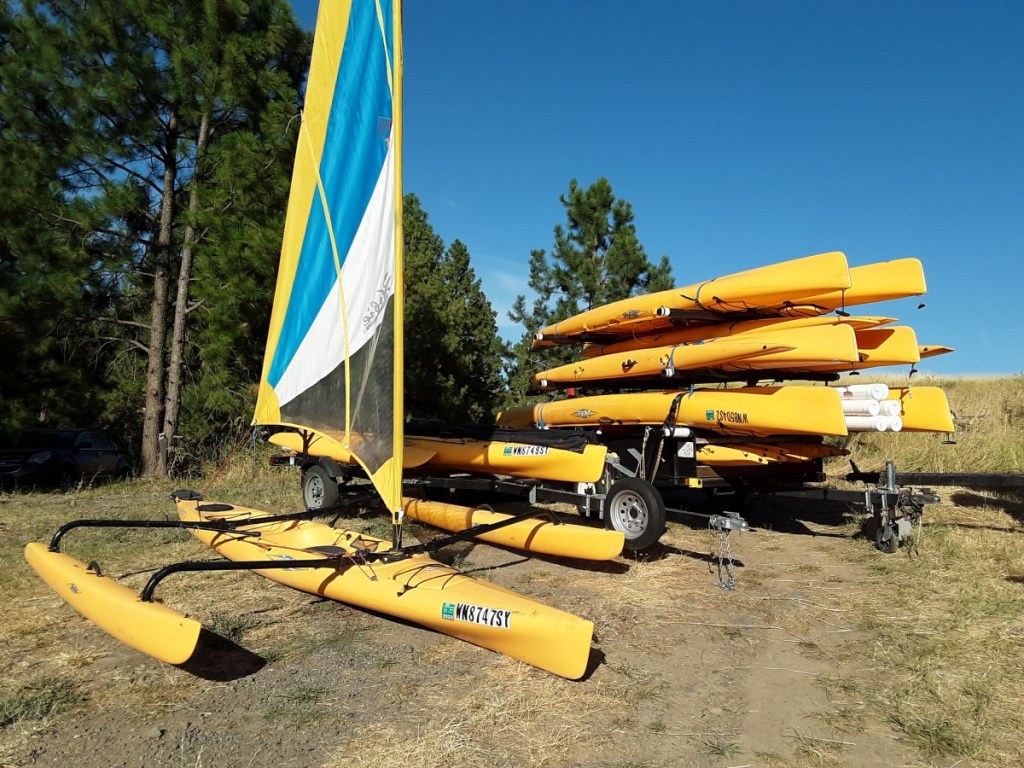
3.3 Additional Features
Hobie Kayaks offer a wide range of additional features and accessories that can enhance your paddling experience. These include paddle holders, hatches for storage, gear tracks for customization, and even sail kits for those seeking a little extra thrill.
Consider what additional features are important to you based on your specific needs and preferences. If you value convenience and efficiency, features like paddle holders and ample storage compartments can be invaluable. For anglers, kayaks with integrated rod holders, fishfinder-ready transducer mounts, and accessory tracks for attaching fishing accessories are must-haves. Take the time to explore the various options available and choose a Hobie Kayak that aligns with your desired experience on the water.
Essential Gear for a Hobie Kayak Adventure
4.1 Personal Safety Equipment
Safety should always be your top priority when embarking on a Hobie Kayak adventure. It is vital to have the necessary personal safety equipment to ensure a safe and enjoyable experience on the water.
A properly fitting and approved personal flotation device (PFD) is an absolute must. Make sure to choose a PFD specifically designed for kayaking, as it will offer maximum comfort and mobility without restricting your movements. Additionally, a whistle or other sound-producing device is essential for attracting attention and signaling for help in case of an emergency.
Other safety equipment includes a bilge pump to remove water from the kayak, a paddle float for self-rescue in case of capsizing, and a tow rope for towing or being towed in emergency situations. It is also advisable to carry a first aid kit, sunscreen, a hat, and sunglasses to protect yourself from the sun’s rays during prolonged exposure on the water.
4.2 Navigation and Communication Devices
When venturing into unfamiliar waters, it is important to have the necessary navigation and communication devices to ensure you can navigate safely and stay connected if needed.
A navigational compass or GPS device is crucial for maintaining a sense of direction and preventing getting lost. Familiarize yourself with basic navigation techniques and map-reading skills to ensure you can navigate confidently, especially in areas with limited visibility or complex waterways.
In case of emergencies or when you need to communicate with others, having a waterproof mobile phone case or a VHF marine radio can be invaluable. These devices allow you to call for assistance or communicate with other boaters in case of emergencies or unexpected situations. Remember to keep your electronics in watertight storage compartments or dry bags to protect them from water damage.
4.3 Fishing Accessories
For those who enjoy fishing from their Hobie Kayak, having the right fishing accessories can greatly enhance your angling experience.
Rod holders are essential for keeping your fishing rods secure and within easy reach. Hobie Kayaks come equipped with integrated rod holders, but additional rod holders can be added for greater convenience and customization.
A fishfinder is another valuable tool for anglers, providing real-time information about water depth, fish location, and underwater structures. Install a fishfinder on your kayak and learn how to interpret the readings to maximize your chances of a successful catch.
Investing in a quality kayak fishing crate or tackle box enables you to organize and store your fishing gear efficiently. This ensures that everything is within reach when you need it, while also keeping your kayak clutter-free.
Planning for a Hobie Kayak Adventure
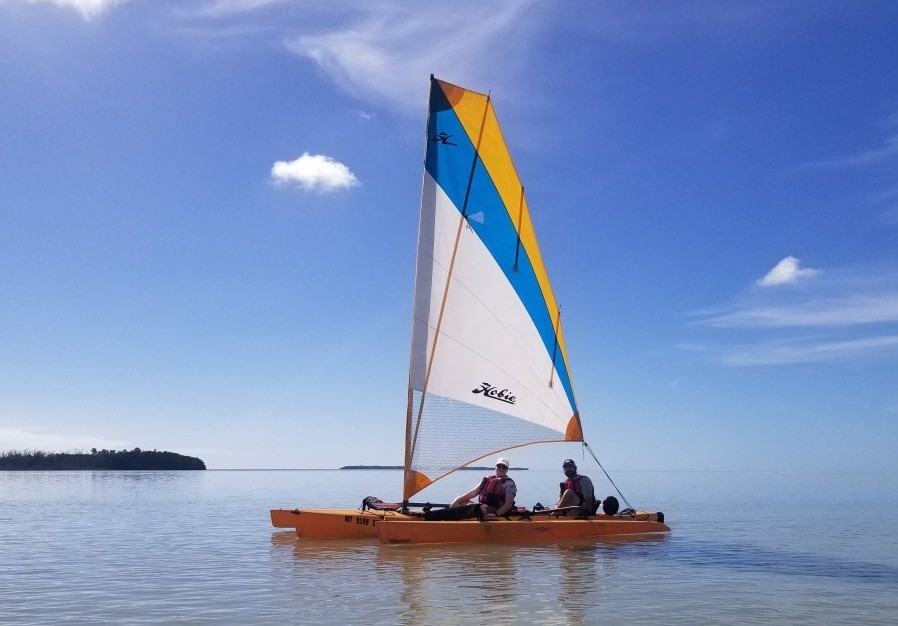
5.1 Researching the Location
Before embarking on a Hobie Kayak adventure, it is essential to thoroughly research your chosen destination. Consider factors such as the difficulty level of the water conditions, the presence of potential hazards, and any specific regulations or permits required.
Look for information about the types of water bodies available in the area, such as lakes, rivers, or coastal waters, and determine which one best suits your preferences and skill level. Research the local flora and fauna, as well as any unique geological features or points of interest that may enhance your experience.
It can also be beneficial to read reviews or seek recommendations from other kayakers who have previously explored the area. Their insights and firsthand experiences can provide valuable tips and suggestions for your adventure.
5.2 Checking Weather and Tides
Accurate and up-to-date weather and tide information is crucial for safe and enjoyable kayaking. Check the weather forecast before heading out and, if possible, throughout your trip to stay informed about any changes or potential hazards.
Pay attention to wind speeds, as strong winds can dramatically affect your paddling experience and make certain areas of water unsafe. Similarly, be aware of any severe weather warnings, such as thunderstorms or high swells, that could make kayaking hazardous.
Tide charts are essential for coastal kayaking, as they provide information about the rise and fall of tides. Understanding the tidal patterns helps you plan your paddling routes, avoid strong currents or shallow areas, and make the most of favorable tides for easier navigation.
5.3 Creating an Itinerary
Creating a detailed itinerary for your Hobie Kayak adventure ensures that you make the most of your time on the water and helps you stay organized throughout your trip.
Start by determining the duration of your kayaking adventure and dividing it into manageable segments based on your physical abilities and the available facilities. Consider factors such as food and water breaks, rest stops, and potential overnight camping spots if applicable.
Plot your intended paddling routes on a map and identify any checkpoints or key landmarks along the way. This will help you stay on track and monitor your progress. It is essential to communicate your itinerary with someone responsible, such as a friend or family member, so they are aware of your plans and can raise the alarm if necessary.
Remember that flexibility is key when planning an outdoor adventure, as unexpected circumstances may arise. Always be prepared to adapt your itinerary as needed to ensure your safety and enjoyment.
Preparing for a Hobie Kayak Adventure
6.1 Physical Conditioning and Training
Before embarking on a Hobie Kayak adventure, it is important to assess your physical condition and undertake any necessary training or conditioning to ensure you are adequately prepared for the physical demands of paddling.
Engaging in regular cardiovascular exercises, such as swimming, cycling, or brisk walking, can help improve your overall endurance and stamina. Incorporating strength training exercises, specifically targeting the muscles used in kayaking, can also enhance your performance and minimize the risk of muscle strains or injuries.
Consider practicing paddling techniques in a controlled environment, such as a calm lake or a pool, to familiarize yourself with the motion and build your confidence. This will also enable you to refine your strokes and improve your paddling efficiency.
If you are planning an extended kayaking adventure or tackling more challenging conditions, it may be beneficial to consult a professional coach or participate in kayaking courses to enhance your skills and ensure you are adequately prepared.
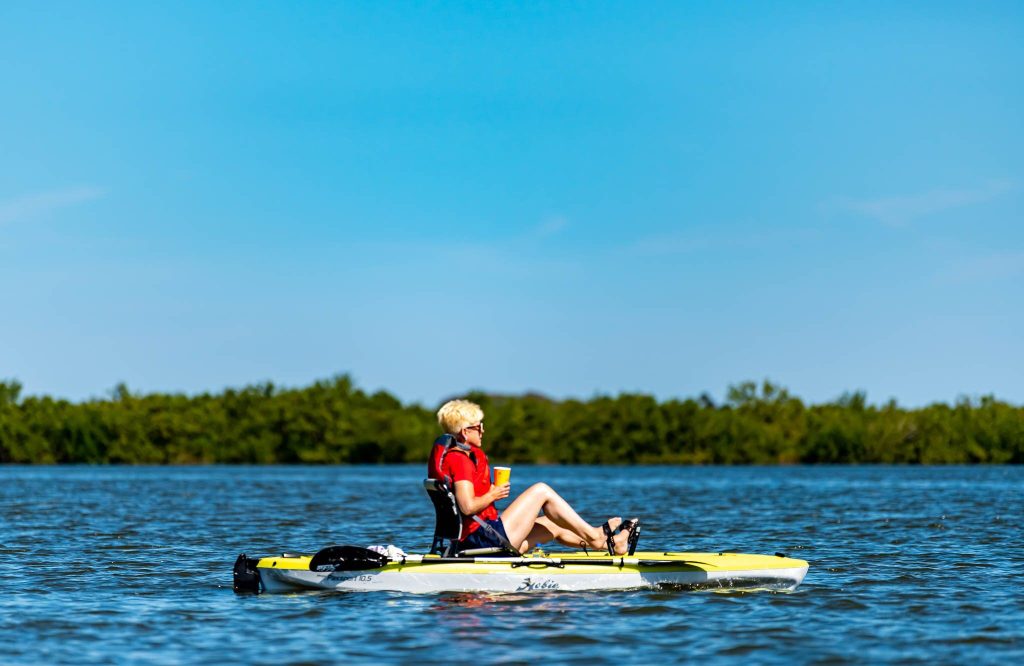
6.2 Packing and Organizing Gear
Properly packing and organizing your gear is essential for a successful and enjoyable Hobie Kayak adventure. Ensuring that everything is easily accessible, well-protected, and properly balanced will enhance your efficiency and comfort on the water.
Invest in dry bags or waterproof storage containers to keep your belongings safe and dry. Divide your gear into categories, such as food and water supplies, personal items, safety equipment, and camping gear if required. This will make it easier to locate specific items quickly and efficiently.
Pack lightweight and compact essentials, considering the weight capacity and storage limitations of your Hobie Kayak. Prioritize items that are essential for your safety, such as your PFD, navigation devices, and communication devices, and allocate appropriate storage spaces for them.
Keep heavier items, such as your camping gear or additional layers of clothing, as close to the kayak’s center of gravity as possible to maintain stability. Distribute the weight evenly to prevent the kayak from becoming unbalanced, which can negatively affect maneuverability and increase the risk of capsizing.
6.3 Familiarizing with Hobie Kayak
Before embarking on your Hobie Kayak adventure, take the time to familiarize yourself with your kayak and its unique features. Perform a thorough inspection of the kayak to ensure that it is in good working condition and that all components, such as the MirageDrive system, rudder controls, and hatches, are functioning properly.
Practice getting in and out of the kayak on dry land and learn how to adjust the seat and foot pedals to achieve optimum comfort and paddling efficiency. Experiment with the MirageDrive system to become familiar with the pedaling motion and to ensure it is properly aligned and engaging smoothly.
If you are new to kayak sailing, consider having a trial run in a controlled environment. Hobie Kayaks offer sail kits that allow you to transform your kayak into a sailing vessel, providing a thrilling and exhilarating experience. Learning how to operate the sail and understand the principles of sailing will add an exciting dimension to your kayaking adventures.
Navigating the Waters with Hobie Kayak
7.1 Proper Kayak Paddling Techniques
Mastering proper kayak paddling techniques is key to maximizing your efficiency and reducing the risk of fatigue or injury. Here are a few fundamental paddling techniques to keep in mind:
- Maintain a relaxed and upright posture with your back straight and your core engaged. This helps to distribute your effort evenly across your muscles and prevents strain on your lower back.
- Grip the paddle loosely, allowing your hands to relax and preventing unnecessary tension in your wrists and forearms. Your top hand should be positioned slightly above shoulder level, while your bottom hand should be lower and closer to your body.
- Initiate each stroke by rotating your torso and engaging your core muscles. Avoid relying solely on your arms, as this can lead to fatigue.
- Use your torso and core to drive the paddle blade through the water, keeping your arms relatively straight. Maintain a smooth and fluid motion, focusing on efficiency rather than speed.
- Exit the water cleanly at the end of each stroke, lifting the blade out with minimal splashing. This reduces resistance and increases your efficiency.
Practicing these techniques in a calm and controlled environment will help you develop your own paddling style and build confidence in your abilities.
7.2 Understanding Water Conditions
Understanding water conditions is crucial for safe navigation and an enjoyable Hobie Kayak adventure. Here are a few key considerations to keep in mind:
- Check water depth and be aware of shallow areas or submerged obstacles. Pay close attention to changing tides, as water levels can affect the depth in certain locations.
- Always be mindful of the presence of strong currents or tidal flows, especially in coastal areas or near river mouths. Take into account the ebb and flow of tides and plan your paddling accordingly.
- Be aware of wind conditions and how they may affect your ability to paddle. Strong winds can make kayaking more challenging and potentially hazardous, particularly when combined with powerful currents or rough water.
- Stay alert to weather conditions and be prepared to seek shelter or alter your plans if necessary. Sudden changes in weather, such as thunderstorms or high winds, can pose risks to kayakers.
- Learn to read water and understand the behavior of waves and swells. Knowing how to navigate through or around breaking waves or turbulent water can help you stay safe and maintain control of your kayak.
It is important to continually assess and adapt to the changing water conditions while on your Hobie Kayak adventure. Prioritize safety and make informed decisions that align with your skill level and equipment capabilities.
7.3 Safety Tips
While kayaking with a Hobie Kayak can be a safe and enjoyable activity, it is important to follow certain safety guidelines to minimize risks and ensure a positive experience. Here are some key safety tips to keep in mind:
- Always wear your personal flotation device (PFD) and ensure it is properly fitted. This is a critical piece of safety equipment that can save your life in the event of an emergency.
- Share your itinerary and paddling plans with a responsible person who is aware of your trip. Provide them with details of your intended route, expected duration, and any emergency contacts.
- Avoid paddling alone whenever possible. Kayaking with a buddy or in a group adds an extra layer of safety and provides support in case of an emergency.
- Keep a close eye on changing weather conditions and be prepared to alter your plans accordingly. Avoid kayaking in severe weather, high winds, or thunderstorms that can put your safety at risk.
- Familiarize yourself with the local water rules and regulations, such as speed limits or no-wake zones, especially when paddling in busy waterways or near boat traffic.
- Maintain a safe distance from larger vessels, such as motorized boats or ships. Stay visible by using brightly colored clothing or flags and make your presence known to other watercraft by using appropriate hand signals.
- Be cautious when approaching wildlife and maintain a respectful distance. Avoid disturbing or feeding wildlife, as this can disrupt their natural behaviors and potentially put both you and the animals at risk.
- Stay hydrated and carry sufficient drinking water to prevent dehydration, especially during longer paddling sessions or in hot and humid conditions.
By adhering to these safety guidelines, you can ensure a safe and enjoyable Hobie Kayak adventure.
Exploring Unique Destinations with a Hobie Kayak
8.1 Coastal Adventures
Coastal kayaking with a Hobie Kayak offers a unique opportunity to explore stunning shorelines, hidden coves, and wildlife-rich habitats. Whether you choose to paddle along rocky cliffs, sandy beaches, or mangrove forests, coastal adventures provide breathtaking scenery and unforgettable experiences.
Consider exploring coastal areas known for their rich marine biodiversity, such as coral reefs or kelp forests. The crystal-clear waters offer a glimpse into a world teeming with vibrant fish, curious sea turtles, and an array of other fascinating marine creatures.
Coastal kayaking also opens up opportunities for thrilling experiences such as sea kayaking and kayak surfing. With the appropriate skill level and the right Hobie Kayak model, you can ride ocean swells and enjoy the exhilaration of catching waves from the comfort of your kayak.
8.2 Inland Waterways
Inland waterways, such as lakes, rivers, and estuaries, present a whole new world of exploration and tranquility. Paddling in these environments allows you to connect with nature, immerse yourself in peaceful surroundings, and discover hidden gems that can only be accessed by kayak.
Lakes and reservoirs provide calm and serene settings for leisurely paddling and picnicking. You can explore secluded bays, admire breathtaking sunsets, or even camp overnight in designated areas.
Rivers offer a unique combination of tranquility and excitement. You can navigate through gentle currents, navigate around meandering bends, and witness the diverse flora and fauna along the riverbanks. Consider researching river trails or guided trips to enhance your river kayaking experience.
Estuaries, where rivers meet the sea, are fascinating ecosystems where fresh and saltwater merge. Paddling through estuaries allows you to observe shorebirds, marine mammals, and even spot elusive species like otters or saltwater crocodiles, depending on your location.
8.3 Remote Wilderness
For those seeking ultimate solitude and untouched natural beauty, remote wilderness destinations offer unparalleled opportunities for exploration. Remote areas, such as national parks or pristine wilderness preserves, can provide a true sense of adventure and allow you to disconnect from the modern world.
Consider kayaking through remote fjords, glacial lakes, or vast wilderness areas where the only sounds you hear are the gentle lapping of water and the calls of wild animals. These pristine environments offer an escape from civilization and provide a chance to reconnect with nature on a deep and meaningful level.
It is important to plan and prepare meticulously for remote wilderness expeditions, ensuring you have the necessary skills, equipment, and supplies for self-sufficiency. Always adhere to leave-no-trace principles, respecting the fragile ecosystems and minimizing your impact on the environment.
Fishing with a Hobie Kayak
9.1 Kayak Fishing Basics
Fishing from a Hobie Kayak is a thrilling and rewarding experience that allows you to reach otherwise inaccessible fishing spots and get up close to marine life. Here are a few basic tips to enhance your kayak fishing adventures:
Familiarize yourself with relevant fishing regulations and obtain the necessary fishing licenses or permits for your chosen location. These ensure that you are adhering to legal requirements and practicing sustainable fishing practices.
Explore areas known for their fishing opportunities, such as estuaries, coastal reefs, or freshwater lakes with healthy fish populations. Research the specific fish species you are targeting and learn about their habits, preferred baits, and seasonal patterns.
Master your kayak control and learn how to effectively anchor or drift based on the fishing conditions. Position your kayak strategically to maximize your chances of catching fish while remaining stable and balanced.
Practice catch and release techniques, especially for species that are protected, overpopulated, or of low reproductive capacity. This helps preserve fish stocks and ensures the sustainability of fisheries for future generations.
9.2 Essential Fishing Equipment
When fishing from a Hobie Kayak, having the right equipment is crucial for success. Here are a few essential fishing gear items to consider:
A fishing rod and reel combination that suits your preferred style of fishing is essential. Look for lightweight and compact options that are easy to handle within the confined space of a kayak.
Fishing tackle, such as hooks, sinkers, and lures, should be selected based on the species you are targeting. Carry a variety of options to adapt to different fishing conditions.
A landing net or a gaff is useful for safely landing larger fish without compromising your stability in the kayak. Opt for models with telescopic handles or folding mechanisms to save space.
Fishing pliers or a multitool are invaluable for removing hooks, cutting lines, or fixing minor equipment issues. Choose models with features like line cutters, split ring tools, and built-in scale functions for added convenience.
9.3 Catch and Release Practices
Practicing responsible catch and release techniques ensures the sustainability of fish populations and protects the overall health of the aquatic ecosystem. Here are a few guidelines for catch and release fishing:
Handle fish carefully by wetting your hands or using a wet cloth to minimize damage to their scales or protective slime coat. Avoid touching their gills or eyes, as they are sensitive areas.
Minimize the amount of time the fish spends out of the water by having your camera and measuring device ready in advance. This reduces stress on the fish and improves its chances of survival upon release.
Remove the hook with minimal damage to the fish, using appropriate pliers or tools. If the hook is deep in the fish’s throat or stomach, consider cutting the line close to the hook instead of attempting to remove it.
Revive the fish by gently holding it in the water, facing into the current if possible, and allowing it to regain strength before releasing it. Avoid forcefully throwing the fish back into the water, as this can cause injury or disorientation.
Document your catch responsibly, respecting the safety and well-being of the fish. Avoid excessive handling or posing the fish in unnatural or stress-inducing positions. Capture quick and respectful photos before returning the fish to the water promptly.
By practicing catch and release fishing, you can contribute to the conservation of fish populations and help preserve the natural balance of aquatic ecosystems.
Joining the Hobie Kayak Community
10.1 Participating in Hobie Kayak Events
Joining Hobie Kayak events is a fantastic way to connect with like-minded individuals, hone your skills, and immerse yourself in the vibrant kayaking community. Here are a few types of events you can participate in:
Kayak fishing tournaments: Hobie Kayak organizes and sponsors various fishing tournaments across different locations. These events offer friendly competition, exciting challenges, and opportunities to showcase your angling skills.
Paddling races: Test your paddling abilities by joining kayak races organized by Hobie Kayak or local paddling clubs. These races can range from short sprints to long-distance endurance challenges, catering to paddlers of all levels.
Kayak demos and expos: Keep an eye out for kayak demos and expos where you can try different Hobie Kayak models, connect with industry experts, and learn about the latest innovations in technology and gear.
Social gatherings and group trips: Many kayaking communities organize social gatherings, group paddles, and camping trips. These events provide opportunities to build friendships, exchange knowledge, and explore new waters with fellow enthusiasts.
10.2 Connecting with Fellow Kayakers
The kayaking community is known for its camaraderie and willingness to share experiences, tips, and advice. Connecting with fellow kayakers offers numerous benefits, including access to valuable knowledge, new paddling locations, and potential paddling partners. Here are a few ways to connect with fellow kayakers:
Join online forums or social media groups dedicated to kayaking. These platforms provide a space to ask questions, share experiences, and seek advice from a diverse community of paddlers.
Participate in local paddling club activities or workshops. These clubs often organize regular paddling sessions, skill-building workshops, and social events tailored to kayakers of different skill levels.
Attend paddling events or kayak expos in your region. These events typically attract a wide range of paddlers and provide opportunities to network, share stories, and build connections with individuals who share your passion for kayaking.
Consider joining organized kayak tours or guided trips. These trips allow you to paddle with experienced guides and fellow enthusiasts while exploring new and exciting destinations.
10.3 Contributing to Conservation Efforts
As a member of the Hobie Kayak community, you have the opportunity to contribute to conservation efforts and help protect the environment for future generations of kayakers. Here are a few ways to get involved:
Participate in beach cleanups or river restoration projects organized by local environmental organizations. By volunteering your time and effort, you can make a positive impact on the cleanliness and health of our waterways.
Educate yourself and others about responsible fishing practices and sustainable angling. Promote catch and release principles, follow fishing regulations, and encourage others to do the same.
Support marine conservation organizations through donations or volunteer work. These organizations play a vital role in protecting marine habitats, conducting research, and advocating for sustainable fishing practices.
Stay informed about environmental issues that affect the areas you paddle in and engage in conversations about conservation. By sharing your knowledge and experiences, you can inspire others to embrace a deeper connection with nature and become advocates for change.
By actively contributing to conservation efforts, you become a steward of our natural resources and ensure that future generations can enjoy the wonders of kayaking and explore the beauty of our planet’s waters.
In conclusion, Hobie Kayak offers a world of adventure and exploration, whether you are a seasoned kayaker or just beginning your paddling journey. With their exceptional design, innovative features, and a commitment to quality, Hobie Kayaks provide the perfect platform to experience the physical and mental benefits of kayaking while connecting with nature and exploring unique destinations. By choosing the right Hobie Kayak for your needs, preparing carefully, and adhering to safety guidelines, you can embark on unforgettable adventures and become part of a vibrant kayaking community. So, grab your paddle, navigate the waters with Hobie Kayak, and let the adventure begin!

